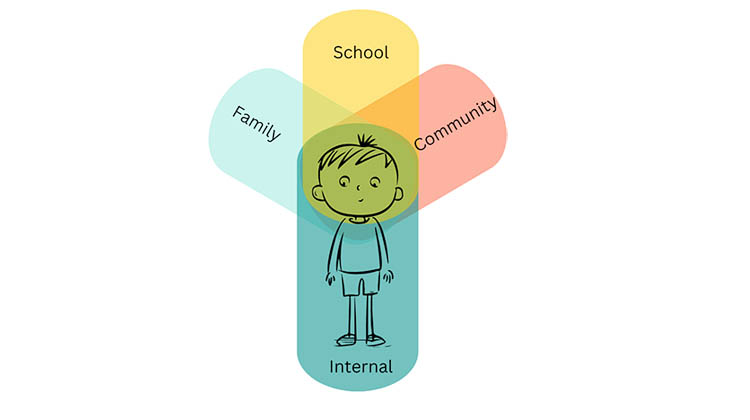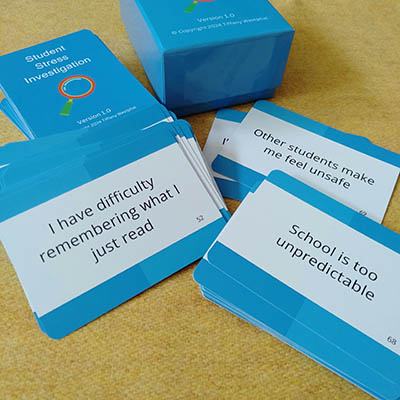Have You Known a Student Who Really Wanted to go to School but Just Couldn’t? Ever Wondered Why?

In the UK, USA and Australia schools are reporting declining attendance rates. Significant numbers of students are experiencing distress that is impacting their capacity to attend school. In Australia a recent poll suggested as many as 30% of students had experienced “school refusal” in the past 12 months. On Jan 23rd 2025 Australian Education Research Organisation (AERO) published updated data which were presented to Education Ministers.
Lived experience organisations such as Not Fine in School in the UK and School Can’t Australia have come to reject the term “school refusal”, as this implies that students are making a wilful choice not to go to school. They suggest the phenomenon is best viewed as a response to one or more stressors that requires adults to be curious so we can identify stressors and barriers and appropriate supports and adjustments. When we focus on behaviour and trying to coerce the student to attend school, or on trying to correct what we perceive as faulty thinking, or we try to push them through distress without first identifying stressors and barriers and seeking to reduce them, we set students up for failure and risk worsened mental health because the source of their stress is not resolved. Whilst teaching relaxation and anxiety management skills to a student with mild or temporary stress may be effective, those experiencing chronic stress, benefit from assistance that targets the source of their stress.
What are the Common Sources of Chronic or Severe Stress for Students?
Bronfenbrenner’s socio ecologic theory reminds us that stressors can be experienced by students within different contexts and that the student is woven into multiple interrelated communities/contexts. In working with students who are experiencing school attendance difficulties I’ve found it helpful to reflect on sources of stress within the following contexts:
1. The Family,
2. The Community,
3. School, or
4. The individual.
Examples of stressors impacting a student within the context of family might include things like: parental unemployment, family separation, chronic mental/physical illness of a family member, loss of a family member or loss of a beloved pet. When one family member is stressed, this often leads others in the family to feel the effects of stress as well. School Can’t Australia’s research indicated that just over 30% of parents and carers felt that stressors experienced with in the context of family had been implicated in their child experiencing school can’t.
Examples of stressors experienced within the context of community might include impacts of natural disasters, experiences of racism, ableism, violence within a community, impact of pandemics, economic stress and difficulty accessing resources.
Examples of stressors within the context of school can be many and varied and may have to do with peer or staff relationships, staffing levels, sensory environment (e.g. heating, aircon, lighting, noise, visual distraction), poorly understood support needs, difficulties with schoolwork, curriculum design, lack of predictability, difficulties with communicating distress, difficulties with work that is not of interest etc.
In addition to asking about stressors experienced in the context of family, School Can’t Australia’s Dec 2022 research also asked 441 parents and carers of students experiencing school attendance difficulties about 57 school-based stressors. Data collected about the school-based stressors showed that 50% of the sample population indicated that approx. 75% of the 57 items were implicated in the experience of school attendance difficulties.
Examples of internal stressors include physical illnesses, how much sleep you have had, and how you perceive yourself.
In the past school attendance difficulties have been perceived largely as a misbehaviour, lack of motivation, or due to poor discipline or lack of parental oversight. Often, they have also been conceived of as being caused by poor mental health or faulty thinking. Subsequently, interventions have focussed on messaging about attendance, parent training or treatment of faulty thinking associated with mental ill health. When we consider that the problem may not be a fault within the student or due to poor parenting but indeed be a natural protective response to stress then the way we conceive a response changes.
By turning our attention to identify stressors, barriers and unmet support needs we begin to appreciate that the student may well be having a hard time not wilfully refusing to go. They are responding to a perceived or real threat. The insights into school-based stressors and their connection to attendance difficulties drives us to be curious about what might be going on for the student.
Why do we Need to Think About Felt Safety?
Schools are often assumed to be safe places, but we need to consider safety in terms of not just the physical, but also in terms of the psychological. School Can’t Australia’s research suggests that we need to investigate the student’s lived experience of school because “Safety is in the eye of the beholder” (Dr M. Delahooke). It matters not, whether the adult thinks the student is safe it matters whether the student feels safe and is able to (more often than not) feel regulated, capable, accepted and like the energy demands of school match their energy availability. Felt safety is a precursor to being able to engage in learning. We need to be curious about how we can assist students to move from surviving to thriving.
What is the Student Stress Investigation Resource?
The Student Stress Investigation is a resource designed to help students aged 9+ to communicate about their experience of school and can be a valuable tool is seeking to understand what might be underlying a student’s school related distress. A set of nearly 100 cards this resource assists adults to canvas a lot of different aspects of school that a student might be struggling with.
Working with a student as if they were detectives, the adult and student work together to try to make sense of what might be causing the student to feel distressed. Cards are initially sorted into two piles:
1 “Relevant Clues” or things that are a problem for the student, and
2 “Not Relevant Clues” or things that are not a problem.
Next the cards from the pile describing things the student finds problematic are graded by the student according to how problematic the student feels each difficulty to be. The neurodivergent students I work with, frequently indicate that between 30 and 50 of the cards describe things they struggle with. Each student has a different collection of stressors and a different experience of school.
The final step of the investigation is to identify the student’s biggest priorities. They are asked to identify 5 or 6 of the problems they would most like to be rid of.
Having identified the stressors and the student’s top priorities we are then able to work collaboratively with the student, their school, their family and any allied health team to identify adjustments and supports that will reduce stress and protect the student’s mental health.
How can the Student Stress Investigation Help?
The Student Stress Investigation can be used to:
• Identify the support needs of students,
• Assist students (and their families) to understand why they might be struggling with school attendance,
• Assist students to become self-advocates,
• Assist families to understand whether a new school or type of learning might reduce the student’s experience of stress.
Student Stress Investigation works really well when used in conjunction with Dr Ross Greene’s Collaborative Proactive Solutions and can be used to help unpack and identify the often-hidden difficulties that students are experiencing at school. Dr Greene’s “Kids do well if they can” slogan is one that is supported by the Student Stress Investigation tool.
I most often use the Student Stress Investigation with students aged 10+ and I am thrilled with the way that it:
1 Enables students to share about their lived experience of school,
2 Empowers students to become self-advocates,
3 Assists them in making sense of the struggles they are experiencing, and
4 Helps shift the shame they often carry as a result of their struggles.
Some students come to believe that they are a failure or a bad person rather than a person who has been having a really difficult time and whose support needs were poorly understood. Discovering a different narrative about themselves can be very powerful.
Stories to Inspire
It’s exciting to see and hear the way students, families and schools have been impacted by the Student Stress Investigation.
Recently an Occupational Therapist emailed to share that they had used the cards with a non-speaking teen to make sense of past struggles and plan for their transition to TAFE studies. The young person’s mother thought she knew her son’s support needs well but was surprised to learn a lot more about her son’s past struggles as a result of going through the Student Stress Investigation cards.
A 10-year-old’s mother shared the list of stressors with his teacher after we had sorted half of the cards. The teacher on noticing that classroom lighting was one of the problems was able to make an immediate change to the lighting and discovered there were three other students in the class who were also bothered by the lighting. The student was thrilled at this response and couldn’t wait to return to the clinic to sort the remaining Student Stress Investigation cards.
 On another occasion a grade 6 student took her list of stressors to an interview with a potential new school. Along with her mother, she presented the list to the principal and stated: “These are the things I found stressful at my old school. How would you be able to support me with the things on this list at your school?”
On another occasion a grade 6 student took her list of stressors to an interview with a potential new school. Along with her mother, she presented the list to the principal and stated: “These are the things I found stressful at my old school. How would you be able to support me with the things on this list at your school?”
It's not unusual for students at the end of the initial card sort to look at the pile of cards in the “problem pile” and ask: “Is it normal that I have so many things in this pile of problems?” and I’m able to say to them: “Sadly for the student’s I work with who are finding school distressing, it’s not unusual for them to have between 30 and 50 cards in their problem pile. BUT, the good news is that now we know what has been causing you distress we can work with you and your school to see if we can find ways to make it less stressful for you. So you can enjoy being at school and learning.”
Visit www.studentstressinvestigation.com.au to find out more about the Student Stress Investigation resource or www.schoolcantaustralia.com.au to find out more about school attendance difficulties from charity School Can’t Australia.
Tiffany Westphal is a social worker who lives in Naarm (Melbourne). She is creator of the Student Stress Investigation resource and works as a social worker with students experiencing distress about attending school. She also is a director for School Can’t Australia and researches, writes submissions to government, provides professional learning and speaks at conferences sharing the group’s 10 years of lived experience knowledge about what works and what doesn’t when supporting students who are distressed about attending school.